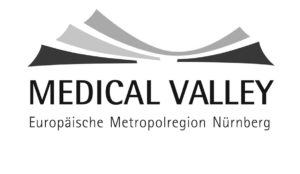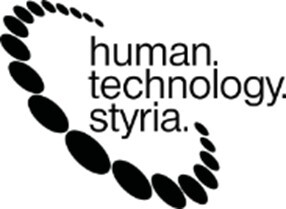All advancements in medical Endoscopy collectively represent a transformative shift promising improved patient outcomes through enhanced accuracy, safety, and efficiency in procedures.
And again most of applied technology matches with medical device functionality and health applications.
Here some context with evolution due to:
Minimally Invasive Procedures
Wireless and Remote-Controlled Instruments
Capsule Endoscopy
Minimally Invasive Procedures
The field of endoscopy in minimally invasive procedures is expected to see several significant advances, enhancing both diagnostic and therapeutic capabilities. Here are some of the key developments which are combining :
Artificial Intelligence (AI) and Machine Learning (ML)
Real-Time Image Analysis: AI can analyze live endoscopic images faster than human operators, highlighting suspicious areas for immediate attention and improving detection rates.
Predictive Analytics: Machine learning algorithms can predict patient outcomes and suggest personalized treatment plans, enhancing overall care.
Computer-Aided Detection (CADe): AI-based systems act as additional observers during endoscopies, improving the detection of lesions and reducing variability in diagnostic outcomes.
Robotic-Assisted Endoscopy
Precision and Flexibility: Robotic systems enhance precision and allow for better navigation of complex internal structures, making procedures less invasive and more effective.
Enhanced Imaging Technologies
High-Definition and 3D Imaging: Advances in imaging technologies provide clearer images and greater depth perception, facilitating more accurate diagnoses and interventions.
Miniaturization Smaller instruments can reach difficult areas with minimal invasion, thanks to advances in optical fibers and miniature scanners.
Disposable and Ergonomic Endoscopes
Reduced Risk of Cross-Contamination: Disposable endoscopes eliminate the risk of cross-contamination, promoting patient safety.
Ergonomic Designs: Lighter, more ergonomic designs reduce surgeon fatigue and enhance ease of use during procedures.
Single-Incision Laparoscopic Surgery (SILS) and Natural Orifice Transluminal Endoscopic Surgery (NOTES)
Minimized Invasiveness: SILS involves a single entry point, often the navel, reducing scars and trauma.
Transmural Procedures: NOTES allows for endoscopic procedures through natural body orifices, potentially reducing the need for external incisions.
Integration of Molecular Probes
Early Cancer Detection: Molecular imaging techniques can visualize molecular changes before visible abnormalities occur, improving early cancer detection.
Automated Reporting Systems
Efficiency Gains: AI can automate the analysis of lesions and generate procedural reports, streamlining workflow and focusing clinicians on patient care.
These advancements collectively enhance the accuracy, safety, and efficiency of endoscopic procedures, leading to improved patient outcomes and reduced recovery times.
Sources
https://www.healthdisgroup.us/articles/APM-5-116.php
Wireless and Remote-Controlled Instruments
Here some Advancements of the IOT area in wireless and remote-controlled instruments in the field of endoscopy are poised to significantly enhance diagnostic and therapeutic procedures. Here are the key developments expected in this area:
Key Innovations
Wireless Capsule Endoscopy (WCE): This technology allows for non-invasive examination of the gastrointestinal (GI) tract. Future capsules are expected to have improved image quality, higher frame rates, and longer operational durations, making them more effective for detecting conditions like cancer and varices. Therapeutic capabilities, such as biopsies and drug delivery, are also anticipated to emerge.
Remote-Controlled Systems: These systems enable greater flexibility and precision during endoscopic procedures. Wireless endoscopy camera systems can transmit high-quality video to remote receivers, reducing the limitations imposed by traditional wired systems13. Active motion navigation will allow healthcare providers to control the position of capsules within the body, enhancing visualization and inspection accuracy.
Artificial Intelligence (AI) Integration: AI technologies are being integrated into endoscopic devices for real-time image analysis and autonomous lesion detection. This will improve diagnostic accuracy and efficiency, allowing for quicker identification of abnormalities and personalized treatment plans.
Robotic-Assisted Endoscopy: Robotic systems are enhancing the precision of complex procedures such as endoscopic submucosal dissection (ESD). These systems offer improved navigation and flexibility, making minimally invasive surgeries safer and more effective. Future robotic platforms may incorporate AI for automated decision-making during procedures.
Enhanced Imaging Technologies: The development of high-definition and 3D imaging systems is expected to provide clearer visuals, facilitating more accurate diagnoses. Miniaturization of imaging devices will also allow access to difficult-to-reach areas within the body with minimal invasion.
Future Directions
Integration of Molecular Imaging: Advances in molecular imaging techniques may lead to better early cancer detection by visualizing changes at the molecular level before visible abnormalities occur.
Automated Reporting Systems: Research is ongoing to develop systems that can automatically generate reports based on AI analyses, streamlining the diagnostic process.
Wireless Power Transmission: This technology is crucial for powering advanced capsule endoscopes, enabling longer operational times and more sophisticated functionalities.
These advancements collectively represent a transformative shift in medical endoscopy, promising improved patient outcomes through enhanced accuracy, safety, and efficiency in procedures. The integration of robotics, AI, and advanced imaging technologies will likely redefine the landscape of gastrointestinal diagnostics and therapeutics in the coming years
Sources
https://envisionnext.net/future-of-endoscopic-instruments
https://pmc.ncbi.nlm.nih.gov/articles/PMC2725374
Capsule Endoscopy
Advances in capsule endoscopy are transforming the field of endoscopy, particularly in the areas of mobility, imaging, drug delivery, and integration with AI. Here are some key expected developments:
Mobility and Control
Magnetic Actuation: Magnetic control systems are being developed to enhance the maneuverability of capsule endoscopes, allowing for targeted investigations and potentially reducing power consumption.
Devices like IntroMedic’s MiroCam® Navi use external magnetic controllers to guide the capsule, improving controllability.
Imaging and Visualization
Enhanced Imaging Technologies: Advances in LEDs, optical design, and MEMS technologies have improved image quality and resolution in capsule endoscopes.
AI Integration: Artificial intelligence can enhance image analysis, potentially improving the detection of abnormalities and early signs of diseases.
Drug Delivery and Therapeutics
Targeted Drug Delivery: Future capsules may be capable of delivering drugs directly to areas of interest within the GI tract, expanding their therapeutic potential.
Integration with AI and Robotics
AI-Driven Analysis: AI can aid in real-time image analysis and predictive analytics, enhancing diagnostic accuracy and personalized treatment planning.
Robotic-Assisted Capsules: Research into robotic wireless capsule endoscopy aims to create intelligent capsule robots that can navigate the GI tract more effectively.
Future Directions
Molecular Imaging: Integrating molecular probes could improve early cancer detection by visualizing molecular changes before visible abnormalities occur.
Automated Reporting Systems: AI-based systems are being developed to streamline the diagnostic process through automated report generation.
These advancements are expected to make capsule endoscopy a more effective tool for both diagnostic and therapeutic applications in the gastrointestinal tract.












